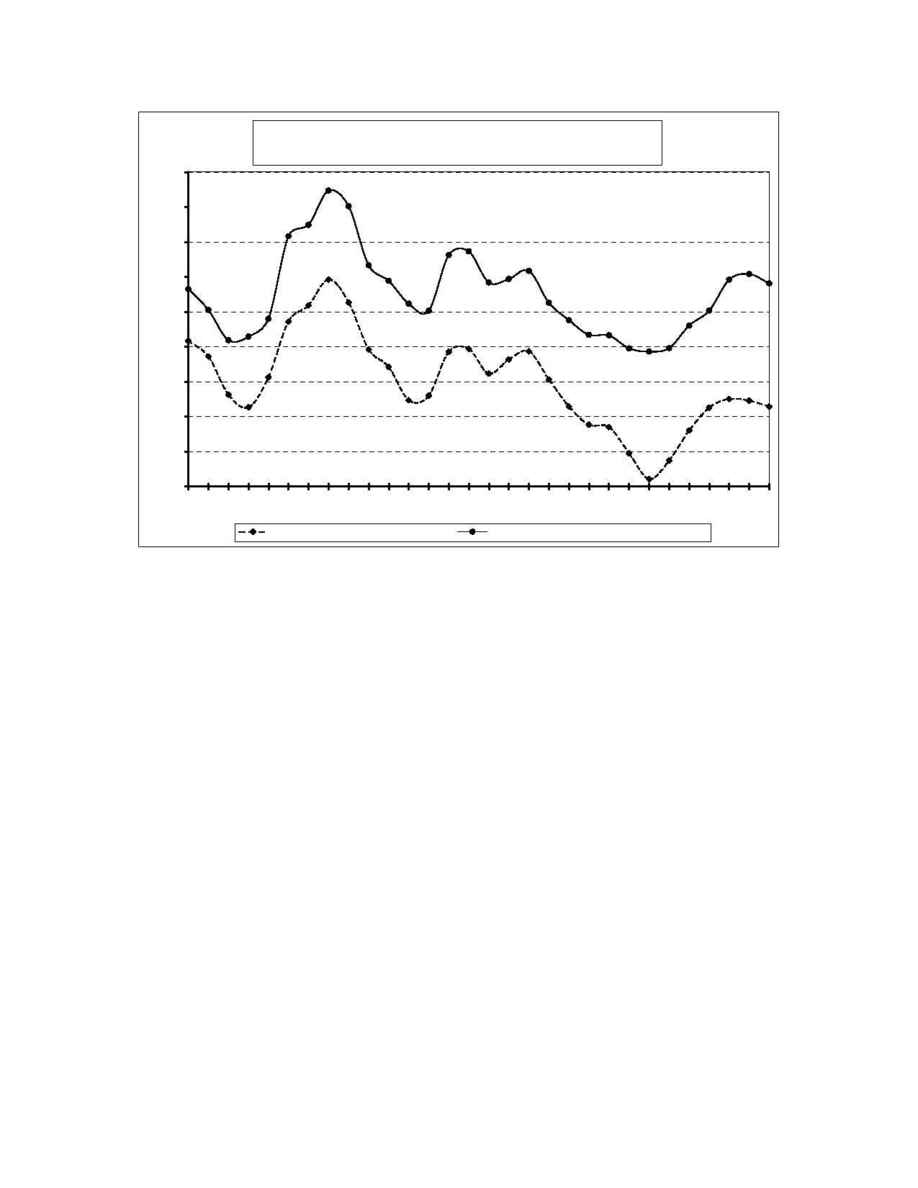
4
Sources: HSH Associates, Bulter, New Jersey, Federal Reserve Bank of New York, The Genesis Marketing Group.
Compared to residential mortgage rates in 28 other large metropolitan markets, rates in Denver
closely follow the other markets surveyed. As reported in the Denver Post, the average Denver interest
rate for a 30-year fixed rate mortgage for the week ending September 2, 2000 was 7.95% (with 1 discount
point), approximately 1.00% higher than September of 1999 levels, but lower than the end of the first
quarter of 2000, reflecting the decreases in the 30 and 10 year U.S. Government bond yields in recent
months.
As a short historical recap, mid-term to long term rates moved lower in early 1998 over concerns
about the economic health in Asian markets and a recognized "flight to quality" to U.S. investments such
as U.S. Treasury obligations. This trend reversed in the first half of 1998 as concerns regarding Asian
markets subsided, decreasing demand and increasing interest rates for mortgage backed securities. Once
again instability in world markets in early 1999 again lowered U.S. Government rates, resulting in a
lowering of U.S. mortgage rates. This trend reversed itself again in the Summer of 1999, lead by stronger
equity markets, strong consumer spending and rising labor costs, giving rise to renewed apprehension
over inflation and a corresponding rise in mortgage rates. These trends appear to have settled in with any
uncertainty in world markets causing a lowering of U.S. interest rates, while continued economic growth
within the U.S. having a counteracting effect, placing upward pressure on interest rates. Although slow,
growth in world economies, especially in the Asian economies along with continued strength in the U.S.
economy with likely keep interest rates on the rise in the short term.
Commercial mortgage interest rates remained fairly constant from 1988 through 1991 and
declined sharply from 1992 through 1993. This decline was significant in that by the fourth quarter of
1993, rates had dropped by 150 to over 200 basis points over a two year span. Commercial rates again
climbed back up in late 1994 and early 1995, but remained relatively constant from mid 1995 through
the end of 1998. As with home mortgage interest rates, the chart on the next page illustrates the high
degree of correlation between long-term U.S. Government Bond yields and high quality commercial
mortgage backed securities (CMBS) over the past seven years. This correlation continued until the
Government Bond - Home Mortgage Interest Rate Comparisons
Quarterly Averages - 1993 through Second Quarter 2000
5.0%
5.5%
6.0%
6.5%
7.0%
7.5%
8.0%
8.5%
9.0%
9.5%
1/93 2/93 3/93 4/93 1/94 2/94 3/94 4/94 1/95 2/95 3/95 4/95 1/96 2/96 3/96 4/96 1/97 2/97 3/97 4/97 1/98 2/98 3/98 4/98 1/99 2/99 3/99 4/99 1/00 2/00
Quarter/Year
Yield or Interest R
a
te
30-Year U.S. Government Bond Yield
30-Year Fixed Home Mortgage Interest Rate
